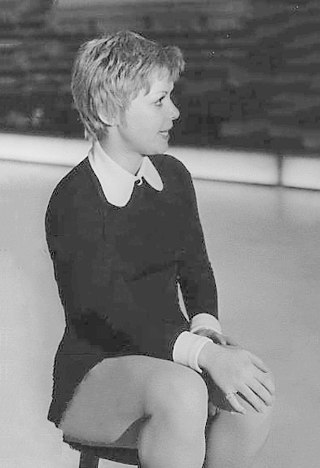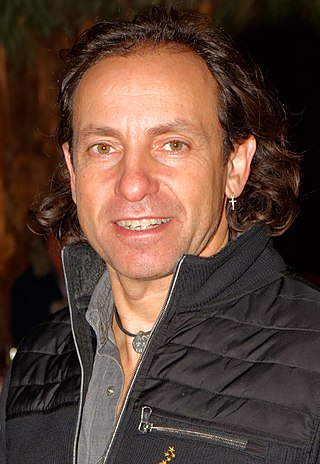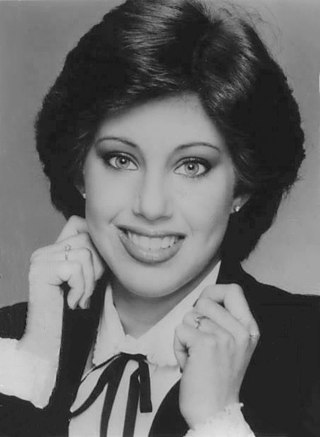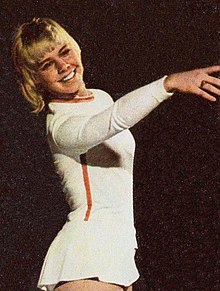
Midori Ito is a retired Japanese figure skater. She is the 1989 World champion and the 1992 Olympic silver medalist. She is the first woman to land a triple-triple jump combination and a triple Axel in competition. At the 1988 Calgary Olympics, she became the first woman to land seven triple jumps in an Olympic free skating competition. She is widely recognised as one of the best figure skaters of all time.

Compulsory figures or school figures were formerly a segment of figure skating, and gave the sport its name. They are the "circular patterns which skaters trace on the ice to demonstrate skill in placing clean turns evenly on round circles". For approximately the first 50 years of figure skating as a sport, until 1947, compulsory figures made up 60 percent of the total score at most competitions around the world. These figures continued to dominate the sport, although they steadily declined in importance, until the International Skating Union (ISU) voted to discontinue them as a part of competitions in 1990. Learning and training in compulsory figures instilled discipline and control; some in the figure skating community considered them necessary to teach skaters basic skills. Skaters would train for hours to learn and execute them well, and competing and judging figures would often take up to eight hours during competitions.

Elizabeth Ann Manley, CM is a Canadian former competitive figure skater. She is the 1988 Olympic silver medallist, the 1988 World silver medalist and a three-time Canadian national champion.

Beatrix "Trixi" Schuba is an Austrian former competitive figure skater who competed in ladies' singles. She is a six-time Austrian national champion (1967–1972), a two-time European champion, a two-time World champion, and 1972 Olympic champion.

Karen Diane Magnussen, OC is a Canadian former competitive figure skater. She is the 1972 Olympic silver medallist and 1973 World champion. She was Canada's Female Athlete of the Year in 1971 and 1972, and was made an Officer of the Order of Canada in 1973.

Philippe Candeloro is a French former competitive figure skater. He is a two-time Olympic bronze medalist, a two-time World medalist, a two-time European silver medalist, and a four-time French national champion (1994–97). He has been a commentator for French television during figure skating events at the Olympics. He also made special appearance as himself and a villain's victim named "Frozer" in Miraculous: Tales of Ladybug & Cat Noir.
The figure skating events at the 1972 Winter Olympics were held at the Makomanai Skating Rink and the Mikaho Indoor Skating Rink.

Linda Sue Fratianne is an American former figure skater known for winning two world-championship titles, four consecutive U.S. championships (1977–1980) and a silver medal in the 1980 Winter Olympics.
Julie Lynn Holmes is an American former figure skater. She won one silver medal and one bronze medal at the World Figure Skating Championships and competed in the 1972 Winter Olympics.

Gwendal Peizerat is a French former competitive ice dancer. With Marina Anissina, he is the 2002 Olympic champion, the 1998 Olympic bronze medalist, the 2000 World champion, and a six-time French national champion.

Isabelle Duchesnay is a retired ice dancer who represented France for most of her career. With her brother Paul Duchesnay, she is the 1991 World champion and the 1992 Olympic silver medalist.

Barbara Fusar-Poli is an Italian ice dancing coach and former competitor. With partner Maurizio Margaglio, she is the 2001 World champion, 2001 European champion, and 2002 Olympic bronze medalist. They won nine Italian titles and competed at three Olympics.

Marina Vladimirovna Klimova is a former competitive ice dancer who competed for the Soviet Union and the Unified Team. With skating partner and husband Sergei Ponomarenko, she is the 1992 Olympic champion, the 1988 Olympic silver medalist, the 1984 Olympic bronze medalist, a three-time World champion, and a four-time European champion.

Sergei Vladilenovich Ponomarenko is a Russian former competitive ice dancer who competed for the Soviet Union and the Unified team. With skating partner and wife Marina Klimova, he is the 1992 Olympic champion, 1988 Olympic silver medalist, 1984 Olympic bronze medalist, three-time World champion, and four-time European champion.

Jerod Swallow is an American ice dancer. With his wife Elizabeth Punsalan, he is a five-time U.S. national champion, two-time Skate America champion, and competed twice in the Winter Olympics.

Special figures were a component of figure skating in the late 19th and early 20th centuries. Like compulsory figures, special figures involved tracing patterns on the ice with the blade of one ice skate. This required the skater to display significant balance and control while skating on one foot.
Shepherd Walton Clark is a famous American competitive figure skater and is the reigning World Figure & Fancy Skating Champion.
The 1971 U.S. Figure Skating Championships was held in Buffalo, New York on January 27–31. The compulsory figure competitions were held at Dann Memorial Rink, while the free skating events were held at the Memorial Auditorium. Medals were awarded in three colors: gold (first), silver (second), and bronze (third) in four disciplines – men's singles, ladies' singles, pair skating, and ice dancing – across three levels: senior, junior, and novice.
The 1972 U.S. Figure Skating Championships was held from January 13–16 at the Long Beach Arena in Long Beach, California. Medals were awarded in three colors: gold (first), silver (second), and bronze (third) in four disciplines – men's singles, ladies' singles, pair skating, and ice dancing – across three levels: senior, junior, and novice.

The demise and revival of compulsory figures occurred, respectively, in 1990, when the International Skating Union (ISU) removed compulsory figures from international single skating competitions, and beginning in 2015, when the first competition focusing entirely on figures took place. Compulsory figures, which is defined as the "circular patterns which skaters trace on the ice to demonstrate skill in placing clean turns evenly on round circles", dominated figure skating for the first 50 years of the sport, although they progressively declined in importance. Skaters would train for hours to learn and execute them well, and competing and judging figures would often take up to eight hours during competitions. Judging scandals and the broadcasts of figure skating on television have been cited as the reason for the decline of figures. The U.S. was the last country to include figures in their competitions, until 1999. The elimination of figures resulted in the increase of focus on the free skating segment and in the domination of younger girls in the sport. Most skaters stopped training with figures, although many coaches continued to teach figures and skaters continued to practice them because figures taught basic skating skills and gave skaters an advantage in developing alignment, core strength, body control, and discipline.














